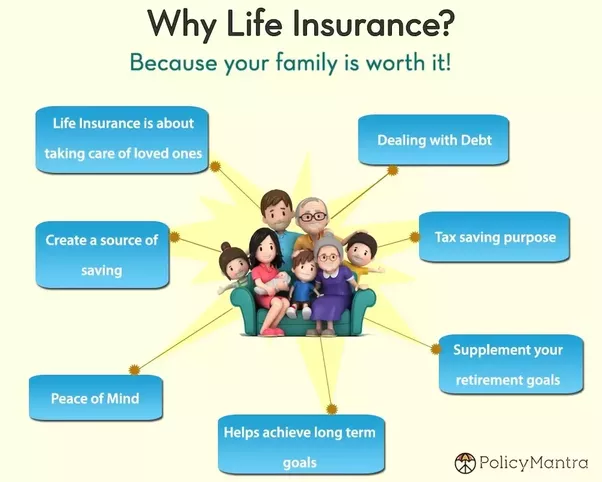8 Easy Facts About Pacific Prime Explained
8 Easy Facts About Pacific Prime Explained
Blog Article
Pacific Prime Can Be Fun For Everyone
Table of ContentsNot known Details About Pacific Prime Some Known Details About Pacific Prime How Pacific Prime can Save You Time, Stress, and Money.The Ultimate Guide To Pacific Prime10 Easy Facts About Pacific Prime Explained
:max_bytes(150000):strip_icc()/basics-to-help-you-understand-how-insurance-works-4783595_final-9cf74d5b66d14f88a21ab29ddb290e2d.png)
This is because the information were collected for a period of solid economic performance. Of the approximated 42 million people that were without insurance, almost concerning 420,000 (about 1 percent) were under 65 years old, the age at which most Americans become eligible for Medicare; 32 million were grownups between ages 18 and 65, about 19 percent of all grownups in this age; and 10 million were kids under 18 years old, about 13.9 percent of all kids (Mills, 2000).
These price quotes of the number of individuals without insurance are generated from the yearly March Supplement to the Existing Population Survey (CPS), performed by the Census Bureau. Unless otherwise kept in mind, nationwide estimates of people without medical insurance and percentages of the populace with different type of coverage are based upon the CPS, one of the most widely used resource of estimates of insurance coverage and uninsurance prices.
Some Of Pacific Prime

Still, the CPS is particularly helpful since it creates annual estimates relatively quickly, reporting the previous year's insurance protection approximates each September, and since it is the basis for a constant set of estimates for more than two decades, permitting analysis of trends in protection in time. For these reasons, along with the considerable usage of the CPS in other studies of insurance policy coverage that exist in this record, we depend on CPS estimates, with limitations kept in mind.

The quote of the number of without insurance people increases when a populace's insurance coverage status is tracked for a number of years. Over a three-year period starting early in 1993, 72 million people, 29 percent of the united state populace, were without coverage for at the very least one month. Within a solitary year (1994 ), 53 million people experienced a minimum of a month without coverage (Bennefield, 1998a)
6 out of every 10 uninsured adults are themselves used. Although functioning does enhance the possibility that one and one's household members will have insurance, it is not a warranty. Even participants of family members with two full-time breadwinner have nearly a one-in-ten possibility of being uninsured (9.1 percent without insurance rate) (Hoffman and Pohl, 2000).
The 45-Second Trick For Pacific Prime
New immigrants account for a significant proportion of people without wellness insurance coverage. One evaluation has actually associated a substantial portion of the recent development in the dimension of the U.S. uninsured populace to immigrants that arrived in this website the country in between 1994 and 1998 (Camarota and Edwards, 2000). Current immigrants (those that concerned the USA within the previous four years) do have a high rate of being uninsured (46 percent), yet they and their children account for just 6 percent of those without insurance policy nationally (Holahan et al., 2001).
The relationship between medical insurance and access to care is well established, as documented later in this chapter. The partnership in between wellness insurance policy and wellness end results is neither straight neither basic, a substantial scientific and health and wellness services research study literature web links wellness insurance policy coverage to improved accessibility to care, far better top quality, and enhanced individual and population health status.
Degrees of analysis for checking out the effects of uninsurance. It concentrates especially on those without any type of health insurance policy for any type of size of time.
The 45-Second Trick For Pacific Prime
The problems dealt with by the underinsured are in some aspects comparable to those encountered by the uninsured, although they are typically less serious. international health insurance. Uninsurance and underinsurance, however, involve definitely different policy problems, and the techniques for addressing them may differ. Throughout this research study and the five reports to comply with, the primary focus is on persons without any medical insurance and hence no aid in spending for wellness treatment past what is offered with charity and safeguard institutions
Health insurance is a powerful factor influencing invoice of treatment since both patients and physicians react to the out-of-pocket cost of services - https://trello.com/w/pacificpr1me_. Health insurance, nevertheless, is neither needed neither adequate to get to clinical services. However, the independent and direct effect of medical insurance coverage on access to health services is well developed.
Others will certainly obtain the wellness care they need also without medical insurance, by spending for it out of pocket or seeking it from service providers who supply treatment free or at very subsidized rates. For still others, medical insurance alone does not ensure invoice of care due to other nonfinancial obstacles, such as a lack of healthcare carriers in their neighborhood, minimal access to transport, illiteracy, or linguistic and cultural distinctions.
The 3-Minute Rule for Pacific Prime
Formal research study concerning uninsured populations in the USA dates to the late 1920s and very early 1930s when the Board on the Cost of Healthcare generated a collection of records about financing doctor workplace visits and hospitalizations. This problem ended up being significant as the varieties of clinically indigent climbed up during the Great Depression.
Report this page